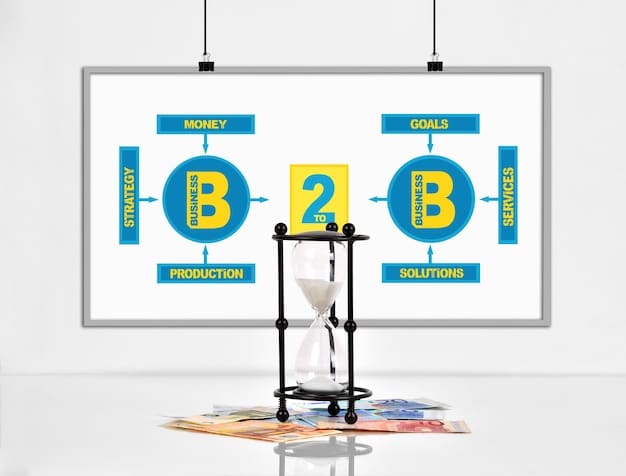Tokenized Journalism vs Paywalls: A US Cost-Benefit Analysis

Tokenized journalism offers an alternative to traditional paywalls by leveraging blockchain technology, potentially lowering costs and increasing accessibility for US readers, requiring a thorough cost-benefit analysis to understand its viability.
Is tokenized journalism vs. traditional paywalls: a cost-benefit analysis for US readers a question on your mind lately? The evolving landscape of journalism in the digital age presents both challenges and opportunities. Traditional paywalls have long been a standard for sustaining news organizations, but emerging technologies like blockchain are introducing novel approaches.
Understanding Traditional Paywalls in US Journalism
Traditional paywalls have been the main source of revenue generation for lots of news organizations. In the US, these systems provide controlled access to content.
The Benefits of Paywall Systems
Paywall systems, while sometimes criticized, offer some advantages to the newspapers using them. Understanding these advantages is important before going into how tokenized journalism can change things.
- Consistent Revenue Stream: Paywalls provide a predictable flow of income, which allows news organizations to budget expenditures.
- Subscribers Relationship: Paywalls promote a nearer connection between publishers and their dedicated readers.
- Content Quality: Revenue allows investment in high-quality journalism, improving the reputation of the newspaper.
Paywalls will keep on playing an integral role in journalistic business models due to their proven ability to generate direct revenue and maintain consumer relationships.

Exploring the Concept of Tokenized Journalism
Tokenized journalism is a cutting-edge method that uses blockchain technology to change how news is produced, distributed, and consumed. In the US, this method provides an appealing alternative to traditional paywalls, potentially changing the dynamics of media accessibility and funding.
How Tokenization Works in Journalism
This concept revolves around creating digital tokens that represent access to news content or support independent journalism.
- Microtransactions: Readers can pay for content using tokens.
- Incentivized Contributions: Incentivizing contributions to news platforms via tokens.
- Direct Support: Tokens can be used to directly support journalists.
Employing tokenization unlocks new revenue streams, letting even smaller publications grow a base of supporters with shared ideals.
Cost Analysis: Tokenized Journalism vs. Paywalls
When evaluating the feasibility of new systems, comparing costs is important. It’s important to explore the expenses and returns of the tokenized journalism vs. traditional paywalls: a cost-benefit analysis for US readers, since it defines the viability of adoption for news entities in the US.
Implementing Tokenized Journalism: Start-up Costs
There are many upfront investments for tokenized journalism. To assess if it suits a news publication, one must know these.
- Tech Infrastructure: Initial costs could be steep because you need blockchain foundations.
- Regulatory Compliance: Ensuring compliance with digital currency laws increases operating budgets.
- User Education: Informing readers about using new digital currencies can entail substantial educational drives.
Even though initial expenditures seem huge, these investments hold great potential for long-term sustainability and scalability in media.

Revenue Potential and Financial Benefits
While the primary focus tends to be on cost, analyzing the revenue potential inherent in both paywall and tokenized systems can transform perceptions surrounding them.
Paywalls – Established Financial Models
Paywalls will keep on playing an integral role in journalistic business models due to their proven ability to generate direct revenue and maintain consumer relationships.
- Predictable Income: Revenue flow is reliable,.
- Subscriber Loyalty: Long-term financial stability is guaranteed.
- Premium Content: Allows the sale of specialized content, increasing revenue.
Although paywalls provide stability, they often restrict access, and consequently, a major part of potential readership remains untapped.
The Impact on US Readers: Access and Affordability
The core of evaluating different economic models for digital news lies in understanding how these frameworks influence access and price, because these significantly shape consumer involvement and satisfaction.
Paywalls – Limited Accessibility
These models sometimes decrease readership as a result subscribers must pay to read any of the content.
- Reduced Reach: Reduces accessibility due to cost.
- Exclusion of Low-Income Readers: Those who cannot afford subscription fees miss important information.
- Content Siloing: Information is confined to subscribed users.
Even though paywalls serve an essential purpose in monetization, they can cause a disadvantage by limiting the availability of news articles, particularly among those who have less finance.
Future Trends and Sustainability
As the digital journalism landscape evolves, the long-term viability of these models depends upon their adaptability to technological changes and shifting consumer behavior.
Hybrid Models – Integrating Tokenization and Paywalls
Hybrid models are increasingly visible, blending benefits of tokenization along with elements of paywalls.
- Enhanced User Experience: Providing flexibility to users.
- Diversified Revenue Streams: Diversifying income for news organizations.
- Inclusivity: Balancing revenue generation.
By strategically integrating these models, it becomes possible for news companies to achieve a fine balance.
| Key Point | Brief Description |
|---|---|
| 💰 Cost Analysis | Comparing startup and operational costs is key to deciding on the right approach. |
| 📈 Revenue Potential | Understanding revenue potential helps assess long-term financial sustainability. |
| Access & Affordability | Both models impact access and affordability for US readers. |
| 🔮 Future Trends | Hybrid models could integrate tokenization with traditional paywalls. |
Frequently Asked Questions
▼
Tokenized journalism uses blockchain technology to compensate content creators. It allows individuals to contribute or consume news using digital tokens, bypassing conventional paywalls.
▼
Tokenized journalism involves upfront technology investments and regulatory compliance costs. Paywalls have traditional operational expenses but may not effectively engage niche readers.
▼
Paywalls provide stable revenue through subscriptions. Tokenized journalism offers new income streams through microtransactions, incentivized contributions, and direct reader support.
▼
▼
Hybrid models could merge tokenization benefits with established paywall systems, creating inclusive content access balanced with sustainable revenue for publishers.
Conclusion
In summary, as media consumption evolves, understanding the nuances of tokenized journalism vs. traditional paywalls: a cost-benefit analysis for US readers becomes essential. While paywalls provide stable revenue, tokenized journalism offers innovative ways to enhance engagement and diversify income. Ultimately, the most effective approach may lie in hybrid models that leverage the strengths of both, ensuring a sustainable and accessible future for quality journalism in the US.





